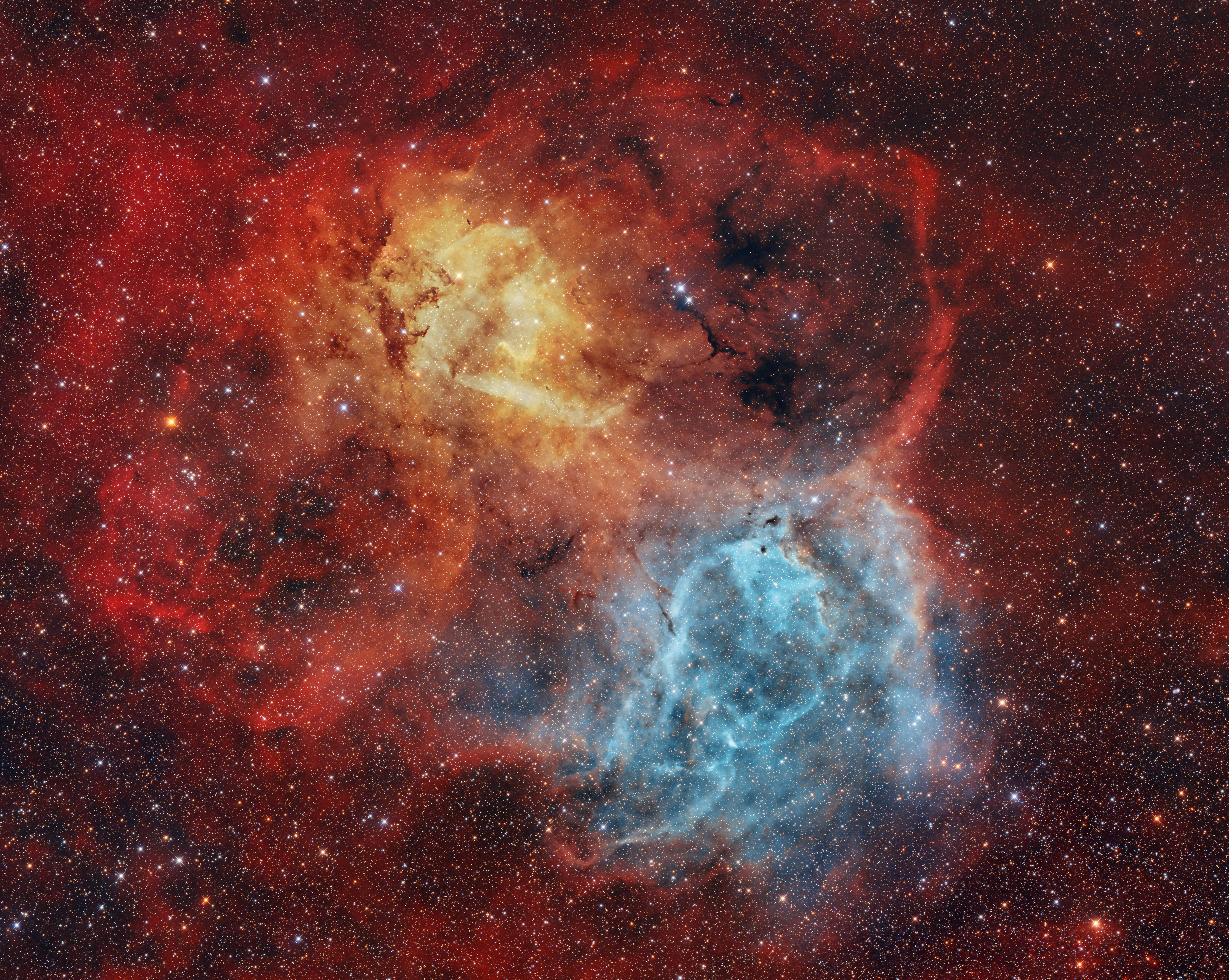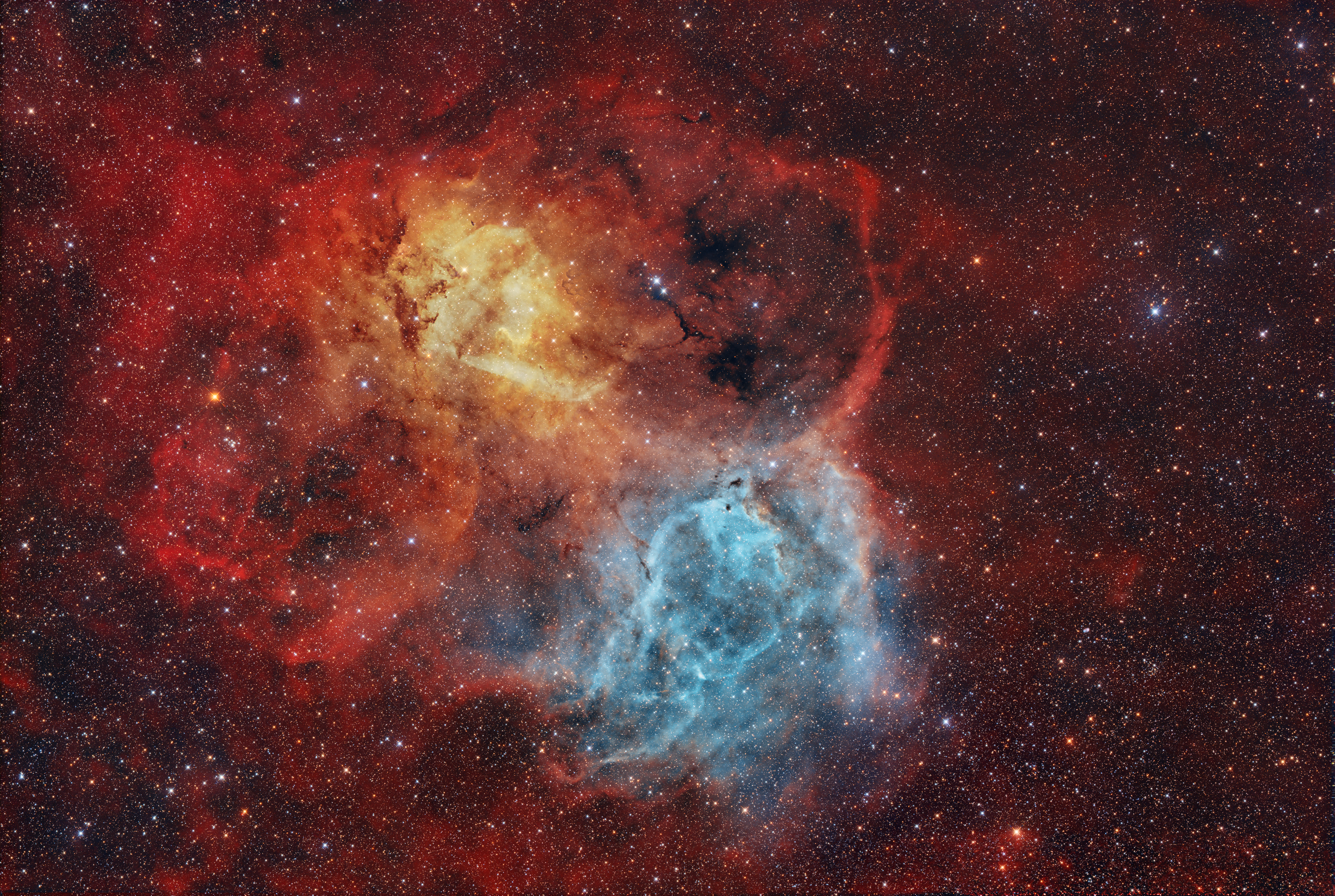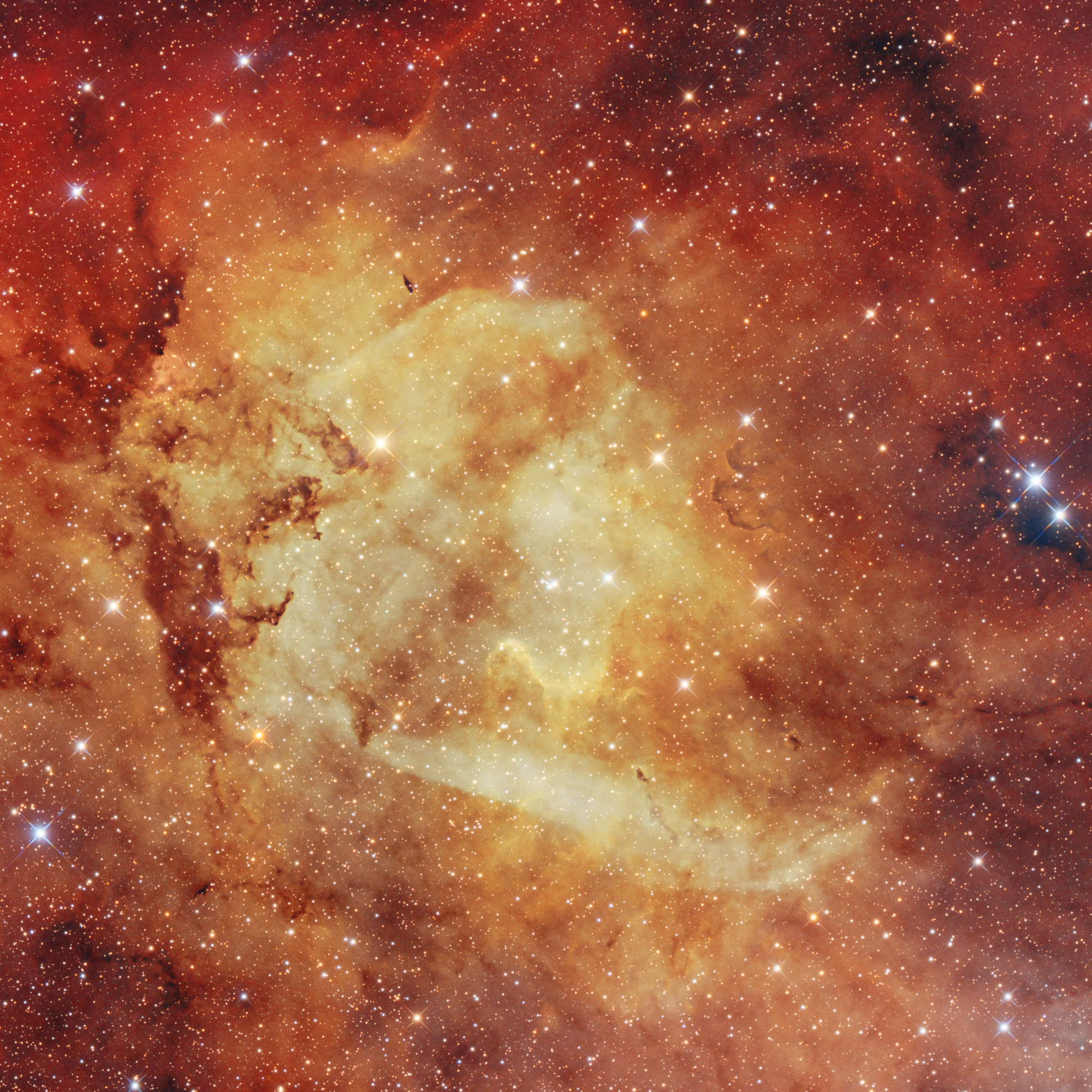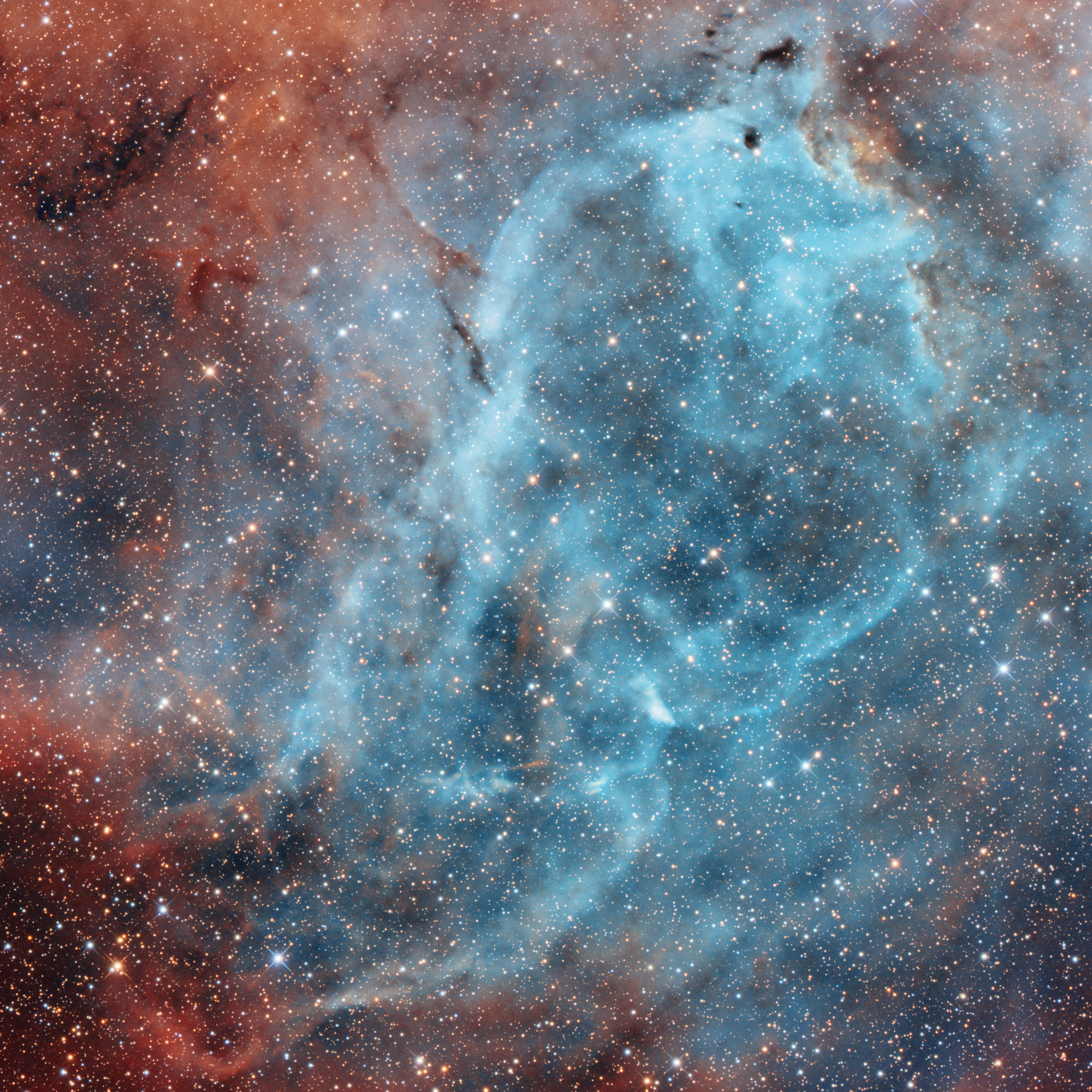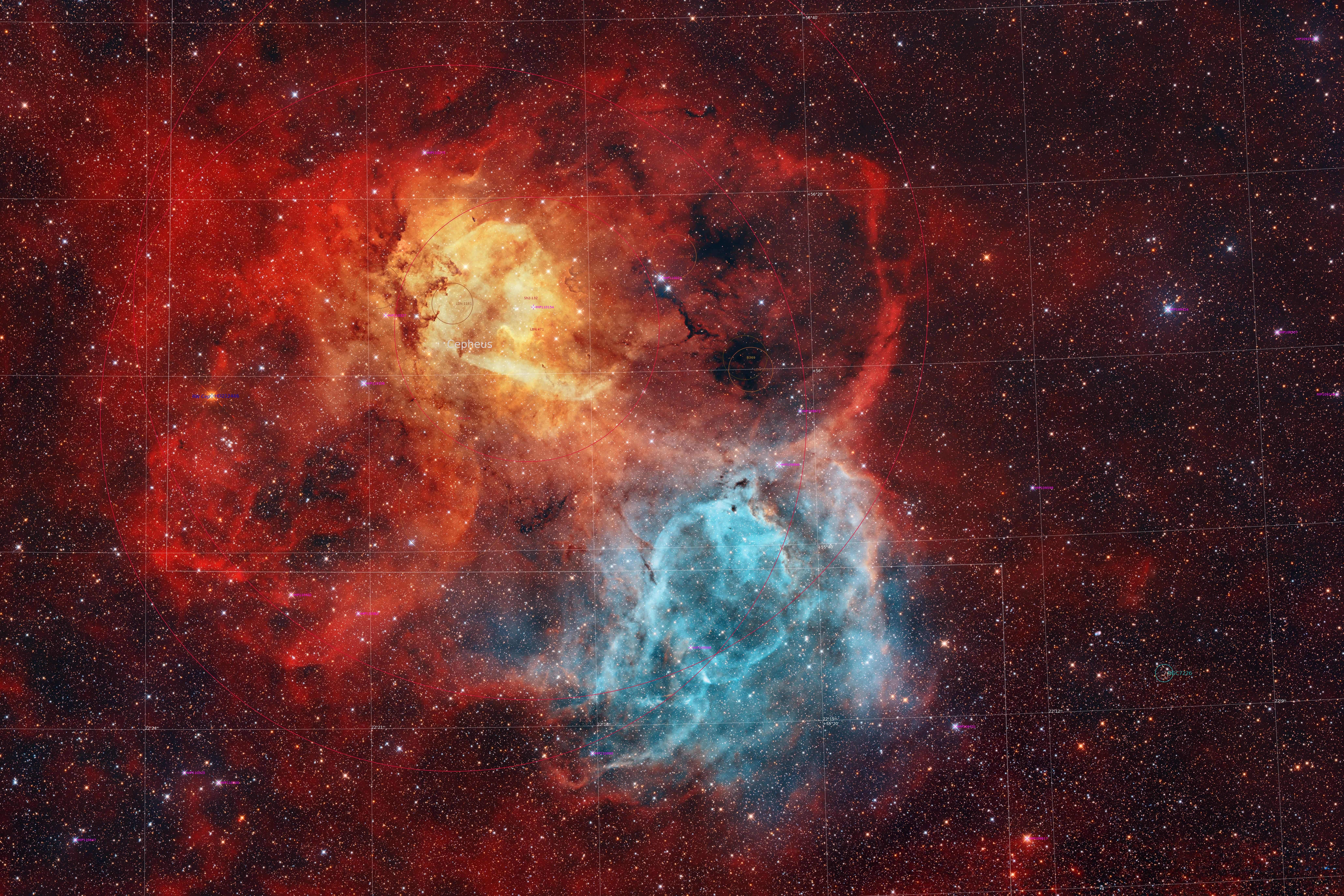
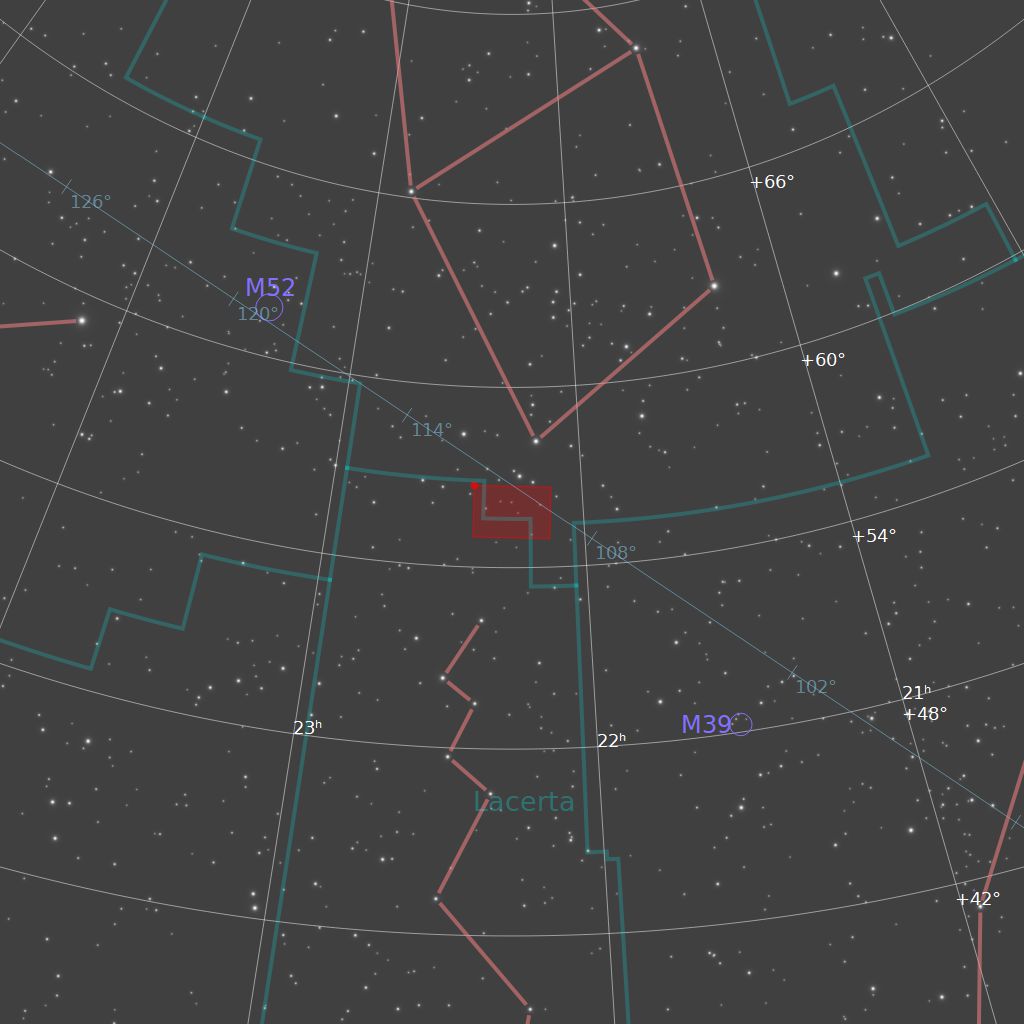
Sh2 132 - The Lion Nebula
The Lion Nebula, cataloged as Sh2-132, is a striking emission nebula located in the constellation Cepheus, approximately 10,000 light-years from Earth. This expansive nebula is part of the Sharpless catalog of HII regions, clouds of gas ionized by the intense radiation of nearby massive stars. Spanning about 250 light-years across, Sh2-132 is known for its distinctive, sprawling shape that loosely resembles the figure of a lion, earning it its celestial nickname.
Sh2-132 is an active stellar nursery, where young, hot stars formed from the collapsing gas and dust of the nebula illuminate and shape the surrounding clouds. Some of the prominent stars in this region belong to the Wolf-Rayet class, a rare and extremely hot type of star known for powerful stellar winds that influence the surrounding nebula. These winds, along with ultraviolet radiation from other O-type stars, sculpt the gas into intricate structures while fueling ongoing star formation.
The nebula exhibits a vivid tapestry of colors, typically appearing red in astrophotographs due to the emission of hydrogen-alpha light, which dominates the visible spectrum in regions rich with ionized hydrogen gas. Other elements, such as oxygen, also contribute to the nebula's coloring, adding blue hues to the glowing gases.
Astronomers are particularly interested in Sh2-132 for studying the interaction between massive stars and their environments. The complex interplay between stellar winds, radiation, and interstellar material makes this nebula a fascinating subject for understanding the lifecycle of stars and the evolution of the interstellar medium. Despite its beauty and scientific importance, the Lion Nebula remains somewhat underexplored due to its faintness and large size. However, its intricate structure and active star-forming regions continue to captivate astronomers and astrophotographers alike.
Photographed from Bamberg and Heidelberg, Germany under Bortle 5 conditions.
-
Category
Emission Nebula
-
Coordinates
RA 22h 19m
DEC +56° 04′ -
Distance
3180 pc
-
Apparent Mag
---
-
Equipment
Takahashi Epsilon e130D
TS Hypergraph 6
Skywatcher AZ-EQ6
QHY 294m pro
-
Exposure
L: 72 x 300 s
R: 36 x 300 s
G: 36 x 300 s
B: 36 x 300 s
Ha: 158 x 300 s
Oiii: 125 x 300 s
Total Integration: 38.6 h -
Publication Date
13.10.2024
